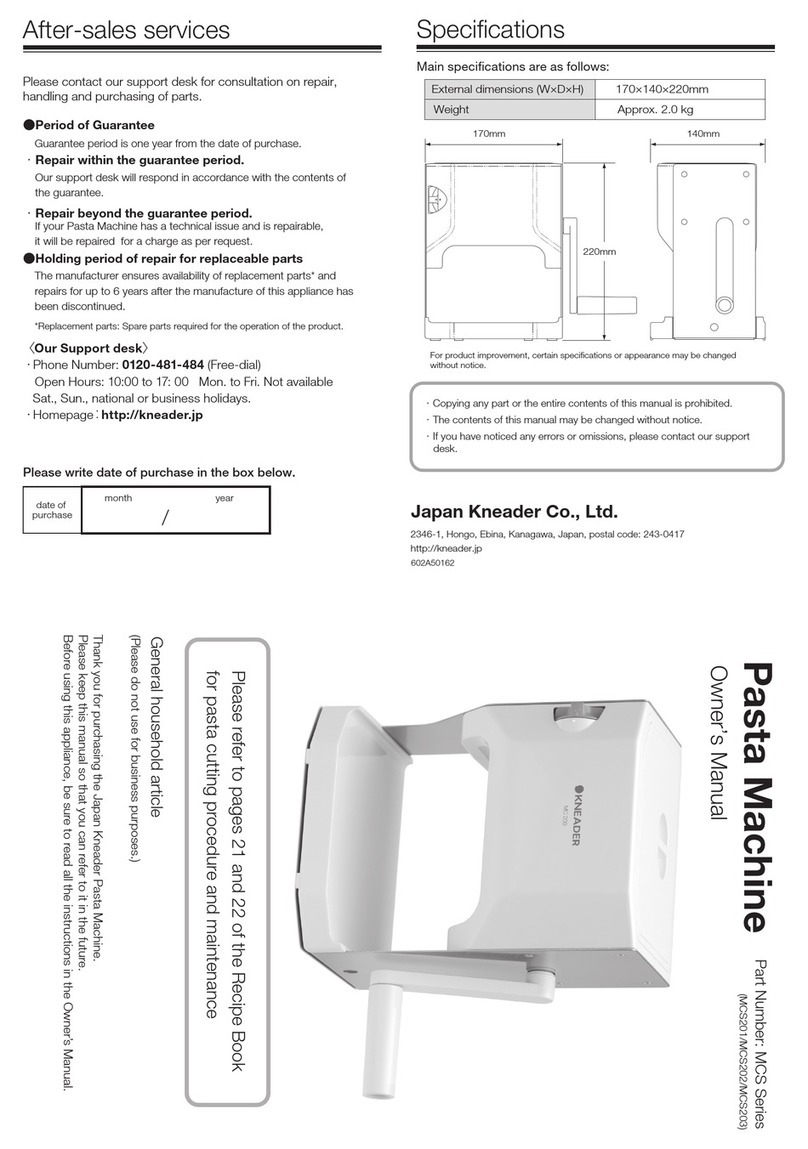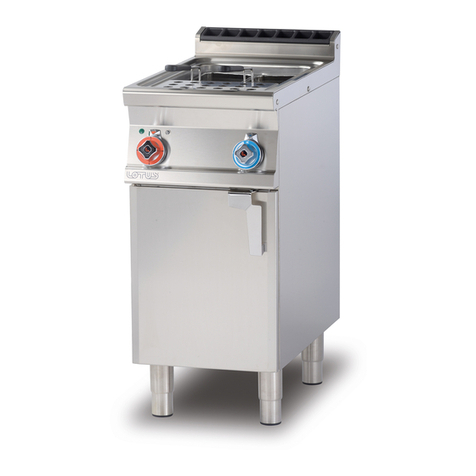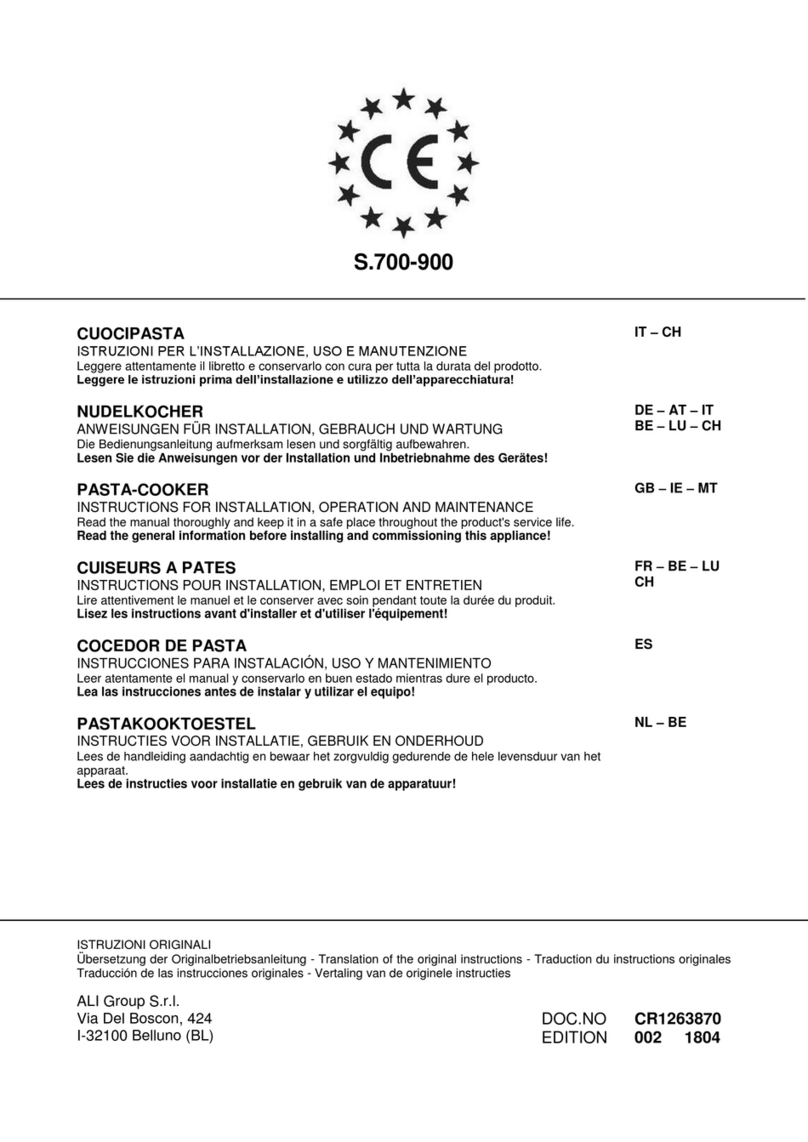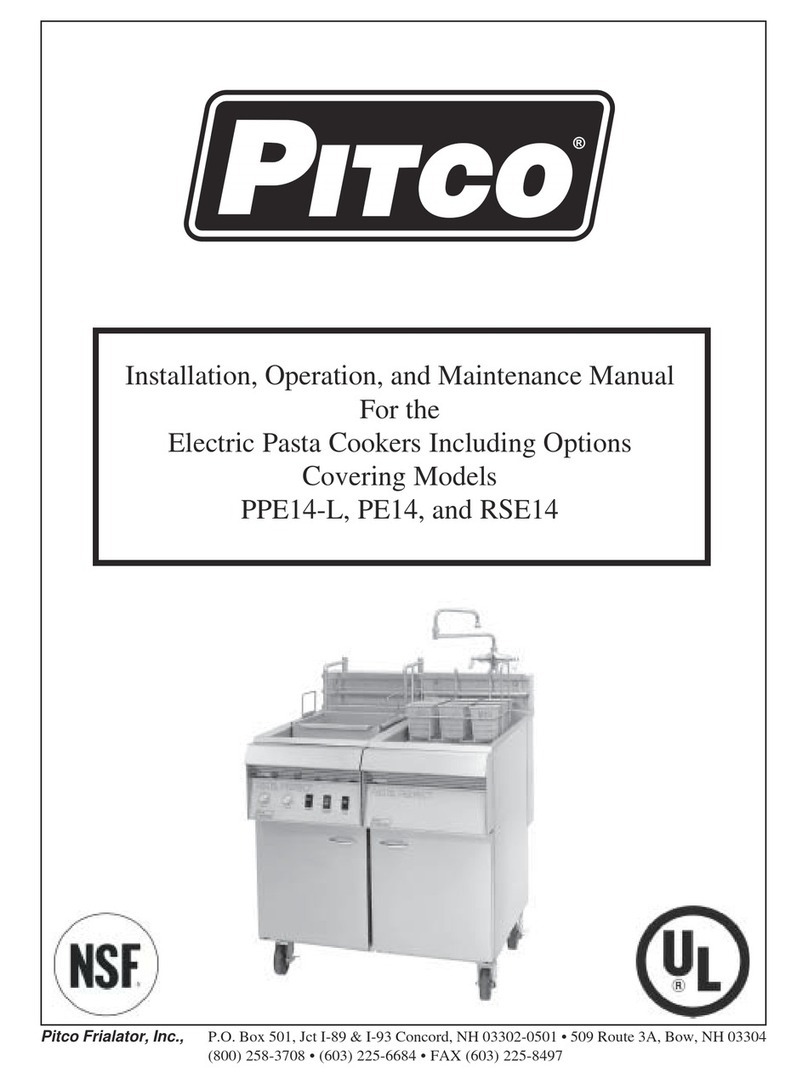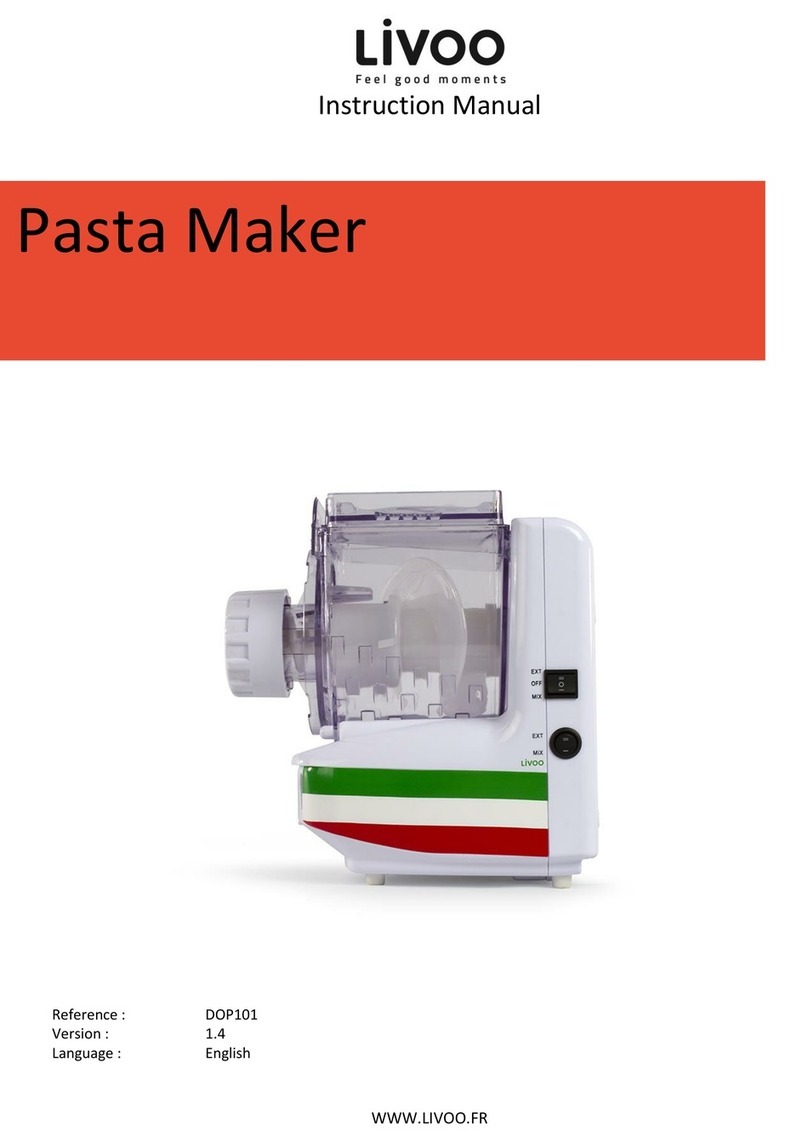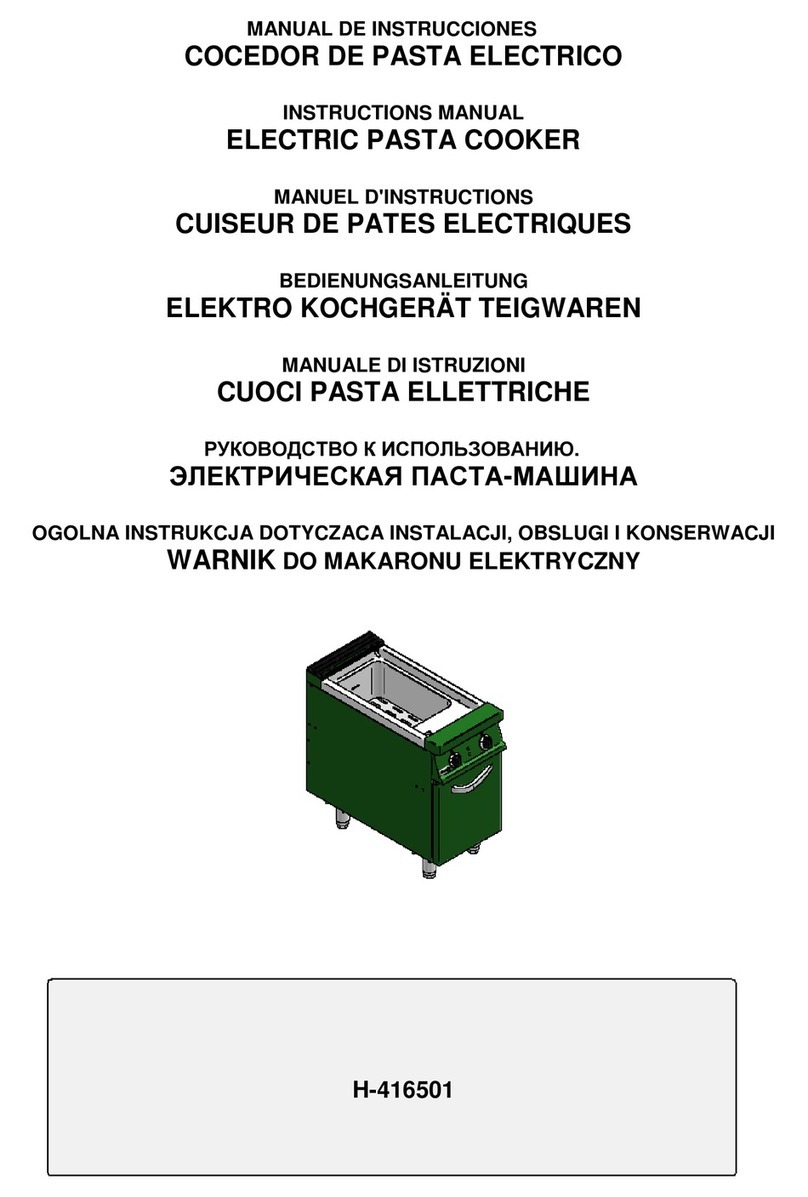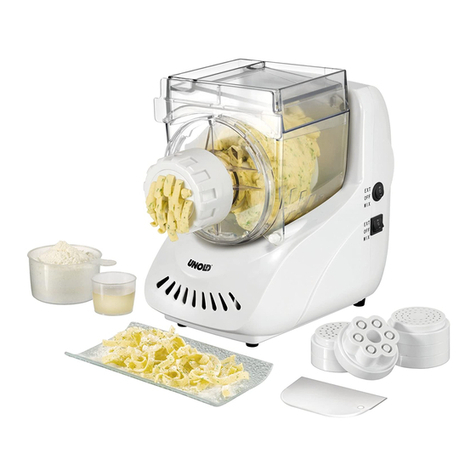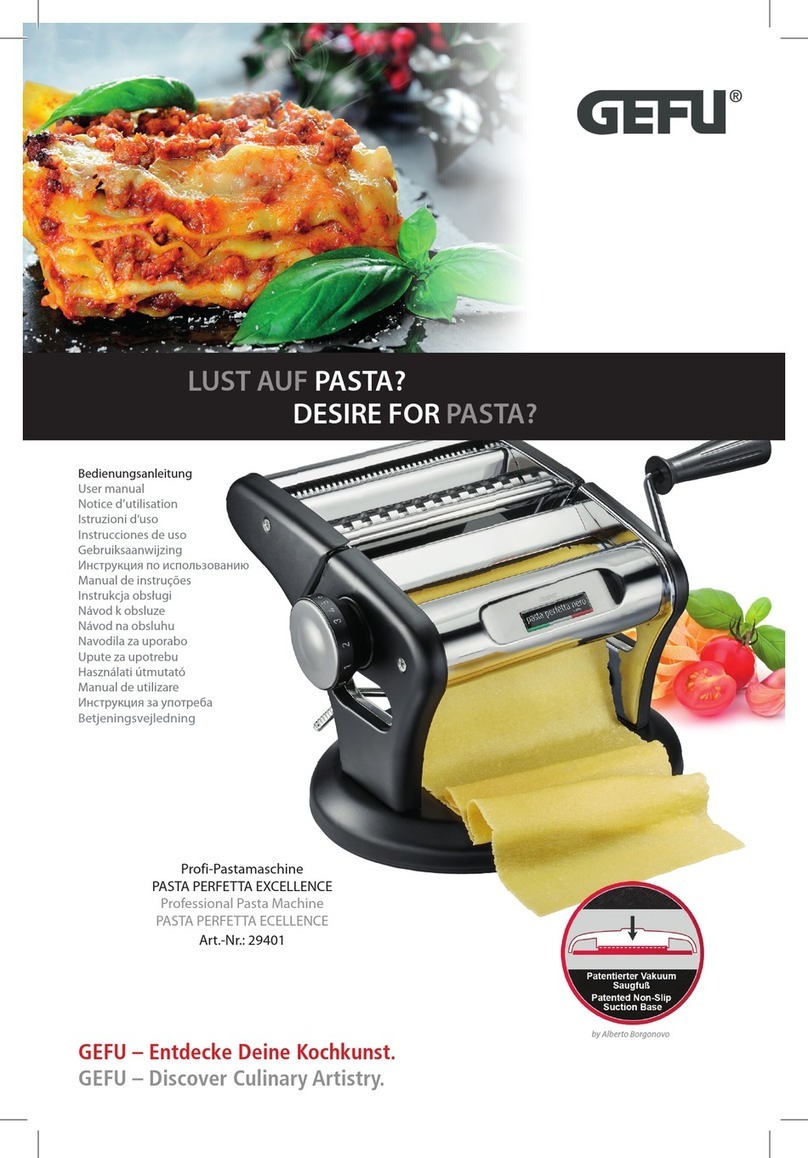
Pastamaker DE
7
ist ideal, wenn man eigene Rezepte aus-
probieren möchte.
Die verschiedenen Möglichkeiten werden
im Folgenden erklärt:
Gerät vorbereiten
1. Sicherstellen, dass das Gerät voll-
ständig zusammengebaut ist (siehe
Kapitel „Aufbauen“).
2. Den Deckel (13) öffnen, indem die
kleine Lasche nach oben gedrückt
wird.
3. Die gewünschte Menge an Mehl
mithilfe des Messbechers (11) in den
Mix-Behälter (2) geben (siehe Kapitel
„Grundrezepte“).
Maximal 750 Gramm Mehl in den
Mix-Behälter geben. Zu viel Inhalt
kann das Gerät beschädigen.
4. Den Deckel wieder aufsetzen (siehe
Kapitel „Aufbauen“).
5. Die Anschlussleitung vollständig aus-
einanderwickeln und den Geräteste-
cker an die Anschlussbuchse an der
Nudelmaschine (1) und den Netzste-
cker an eine Steckdose anschließen.
Alle Kontrollleuchten und das Dis-
play(14) leuchten einmal kurz auf. Es
ertönt ein Signalton.
6. Einen Teller oder eine Schüssel vor
das Gerät stellen, auf dem die Nu-
deln aufgefangen werden.
7. Die Taste START / CANCEL (18) drü-
cken. Auf dem Display erscheint ON.
Voreingestellte Programme
8. Je nach Mehlmenge, die entspre-
chende Taste Menge drücken. Die
Kontrollleuchte dieser Taste blinkt.
9. Erneut die Taste START / CANCEL
drücken. Das Gerät beginnt mit dem
Knetvorgang. Auf dem Display wird
die verbleibende Zeit angezeigt. Es
leuchtet nur die Kontrollleuchte in der
entsprechenden Taste Menge.
10. Langsam die entsprechende Menge
an Wasser mithilfe des Messbe-
chers(4) in die Vertiefung im Deckel
geben (siehe Kapitel „Grundrezepte
“
).
Wenn der Knetvorgang abgeschlos-
sen ist, wird die Pasta automatisch
durch die Formscheibe ausgegeben.
Ist der Teig vollständig ausgegeben,
ertönt ein Signalton, im Display (14)
erscheint OFF und das Gerät schaltet
in den Standby-Modus.
Der Vorgang kann jederzeit unter-
brochen werden, indem die Taste
START / CANCEL gedrückt wird.
Kneten
8. Die Taste Kneten (19) drücken. Die
Kontrollleuchte in der Taste blinkt.
9. Die gewünschte Zeit mit den Tasten
+(15) und –(20) einstellen (1 – 30Mi-
nuten).
10. Die Taste START / CANCEL (18)
drücken. Das Gerät beginnt mit dem
Knetvorgang. Auf dem Display (14)
wird die verbleibende Zeit angezeigt.
Es leuchtet nur die Kontrollleuchte in
der Taste Kneten.
11. Wenn der Knetvorgang abgeschlos-
sen ist, ertönt ein Signalton, im Dis-
play (14) erscheint OFF und das Gerät
schaltet in den Standby-Modus.
Ausgeben
12. Die Taste Ausgeben (16) drücken. Die
Kontrollleuchte in der Taste blinkt.
13. Die gewünschte Zeit mit den Tasten
+(15) und –(20) einstellen (1 – 30Mi-
nuten).
14. Die Taste START / CANCEL (18)
drücken. Das Gerät beginnt mit dem
Ausgeben der Nudeln. Auf dem Dis-
play (14) wird die verbleibende Zeit
angezeigt. Es leuchtet nur die Kont-
rollleuchte in der Taste Ausgeben.




